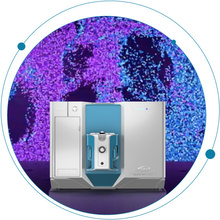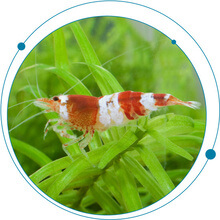LC-MS/MS is a powerful analytical tool in forensic toxicology testing that can support a variety of testing regimes such as screening, confirmation and quantitative workflows. More specifically, analysis of NPS using LC-MS/MS provides many advantages, including the ability to reliably detect new drugs and their metabolites from a variety of biological matrices.
Tags
Maximize NPS analysis with accurate mass spectrometry
LC-MS/MS is a powerful analytical tool in forensic toxicology testing that can support a variety of testing regimes such as screening, confirmation and quantitative workflows. More specifically, analysis of NPS using LC-MS/MS provides many advantages, including the ability to reliably detect new drugs and their metabolites from a variety of biological matrices.
Processing ZenoTOF 7600 system data with DIA-NN software
DIA-NN software is a powerful software tool for processing data independent acquisition (DIA) proteomics datasets. It uses neural networks and other algorithms to identify and quantify peptides and proteins from DIA data and is specifically optimized for fast...

Identifying the unknown PFAS profile in firefighting foams/AFFF
According to a recent study from Harvard University, the US EPA, and NIEHS, traditional targeted analysis techniques poorly characterize the PFAS composition of contemporary PFAS-based firefighting foams, know as aqueous film-forming foams (AFFF). Using the EPA 533 PFAS drinking water method for the analyte list, the researchers found that targeted mass spectrometry methods accounted for <1% of organic fluorine content. This is important because it demonstrates that targeted analysis methods miss nearly all the PFAS compounds in modern AFFF mixtures, thus underestimating the risk to human health and the environment.
Stay informed on the latest novel psychoactive substances (NPS) flooding the US drug market
Each year, the Drug Enforcement Administration (DEA) Special Testing and Research Laboratory publishes an Emerging Threat Report. The data contained in the report is updated quarterly and represents a snapshot of the drug evidence seized and analyzed by the DEA in the...
What is the difference between MRM3 vs MS/MS/MS (MS3)?
The MRM3 workflow and the MS3 scan are functionally the same QTRAP system scan, but used with different goals in mind. The main difference is how these scans are used in the whole MS workflow. With MS3 scans, you can use these in a data dependent mode for discovery...
Downloading results from SCIEX Data Store or BaseSpace
Once your data processing sessions have completed, the results files are saved back to either SCIEX Data Store or BaseSpace. These can be downloaded from the cloud to your desktop for additional analysis. Please see these community posts to learn more: Explaining the...

What is the difference between a rapid and a thorough search in ProteinPilot software?
When setting up your search in ProteinPilot software, you select either a Rapid Search or a Thorough Search in the Search Effort section. This setting determines which parts of the algorithm will be invoked and effectively how deep into your sample you will search to...

What are my normalization options in MarkerView software and when should I use them?
In an LC-MS experiment there are multiple sources of variance that can confound the quality of your results. This variation can be biological e.g. differences between treated and control groups, but can also be non-biological, usually from small variations in...
Quickly compare identification results from ProteinPilot software
When a ProteinPilot Software search is complete, a ProteinPilot report is generated that contains all the false discovery rate (FDR) analysis information. More information on using the large and small ProteinPilot reports can be found here When doing method...
The risky business of aflatoxins in milk
If you’re in the dairy or food testing business, you know the threat aflatoxins pose. Aflatoxins are a type of mycotoxin produced by Aspergillus parasiticus, aspergillus flavus , and rarely aspergillus nomius.1 These are likely the most extensively researched group of mycotoxins because of their adverse health effects.2 What’s more, they are widely found in a variety of crops, namely maize, tree nuts, and spices. Believed to be primarily caused by rising temperatures and humidity, these naturally occurring fungi grow on crops in the field, or during storage of feed and raw materials, where they can potentially produce toxins that enter the food chain.

Top questions about the exposome of PFAS revealed
According to the CDC, the exposome is “the measure of all the exposures of an individual in a lifetime and how those exposures relate to health.”

Breaking down the SCIEX Triple Quad™ 7500 LC-MS/MS System – QTRAP® Ready
Sensitivity and robustness carry different meanings in the world of mass spectrometry. Generally, sensitivity refers to an instrument’s ability to achieve lower limits of detection (LOD). Robustness, on the other hand, refers to an instrument’s ability to consistently...
The honey sting
As a consumer it’s hard for me not to feel inundated with claims that our food is “all-natural” or “chemical-free” or that we should buy certain “superfoods” for their health benefits. We read labels and trust that the product we are buying is what we are truly...

A rising star in food allergen research: proteomics of shellfish allergen
It’s important to know what you’re eating, especially if you suffer from a food allergy.
About 220 million people worldwide live with a food allergy.1 These numbers, along with the complexity and severity of conditions, continue to rise. In America, there are about 32 million food allergy sufferers—5.6 million of those are children under the age of 18.2.2 That’s 1 out of every 13 children, or about 2 in every classroom. From a financial perspective, the cost of food allergy childcare for US families is up to $25 billion

Using Mass Spectrometry for Down Syndrome Metabolomic Research
Last week we launched a really interesting research project with Jeff Miller, Senior SCIEX Scientist, using a SCIEX QTRAP® 6500 mass spectrometer. Our plan was to test whether acetaminophen is metabolized differently in people with Down Syndrome (our younger brother William has Down Syndrome).
No Results Found
The page you requested could not be found. Try refining your search, or use the navigation above to locate the post.



 Contact Support
Contact Support